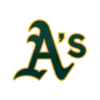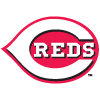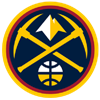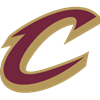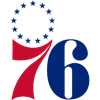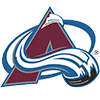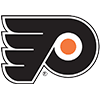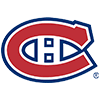The MLB All-Star teams were officially announced Sunday, so I figured I'd get in on the fun and offer my 2022 Fantasy All-Star team. I'll list one player at each position, plus a utility man, two starting pitchers and a relief pitcher. This list is intentionally purely subjective, so if you disagree with any of my selections feel free to make your case for your guy in the comments.
Note that I'm biasing toward fantasy league-winners here, the sort whom you drafted late or picked up in mid-April but went on to perform like early-round picks. That means I won't be strictly going by the top players at each position in terms of earned auction value, preferring late-rounders who jumped into the top five over stars who've claimed the top spot, though I'll be referring to those rankings often.
We'll be more covering than the usual amount of players here, so we'll keep the introduction brief and get right to it. Note that we're only dealing with risers this week, though if MLB ever introduces an All-Scrubs team, I'll happily provide my version of that as well.
2022 Fantasy All-Stars
Catcher: 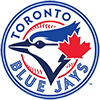 Alejandro Kirk, Blue Jays: Was the theme of this column all a ruse just to give me an excuse to write about my new favorite baseball player again? Maybe. Kirk did have a fair amount of hype during draft season, but he's jumped from 12th in NFBC average draft position among catchers to third in earned value.
Alejandro Kirk, Blue Jays: Was the theme of this column all a ruse just to give me an excuse to write about my new favorite baseball player again? Maybe. Kirk did have a fair amount of hype during draft season, but he's jumped from 12th in NFBC average draft position among catchers to third in earned value.
The MLB All-Star teams were officially announced Sunday, so I figured I'd get in on the fun and offer my 2022 Fantasy All-Star team. I'll list one player at each position, plus a utility man, two starting pitchers and a relief pitcher. This list is intentionally purely subjective, so if you disagree with any of my selections feel free to make your case for your guy in the comments.
Note that I'm biasing toward fantasy league-winners here, the sort whom you drafted late or picked up in mid-April but went on to perform like early-round picks. That means I won't be strictly going by the top players at each position in terms of earned auction value, preferring late-rounders who jumped into the top five over stars who've claimed the top spot, though I'll be referring to those rankings often.
We'll be more covering than the usual amount of players here, so we'll keep the introduction brief and get right to it. Note that we're only dealing with risers this week, though if MLB ever introduces an All-Scrubs team, I'll happily provide my version of that as well.
2022 Fantasy All-Stars
Catcher:  Alejandro Kirk, Blue Jays: Was the theme of this column all a ruse just to give me an excuse to write about my new favorite baseball player again? Maybe. Kirk did have a fair amount of hype during draft season, but he's jumped from 12th in NFBC average draft position among catchers to third in earned value. Backers like me thought he had a special bat, but he's delivered more than I could have ever asked for, hitting .309/.395/.481 with 10 homers. To get a sense of just how unique his bat is, here's a table showing the highest barrel rates among players with a single-digit strikeout rate in at least 250 plate appearances in the Statcast era (since 2015):
Alejandro Kirk, Blue Jays: Was the theme of this column all a ruse just to give me an excuse to write about my new favorite baseball player again? Maybe. Kirk did have a fair amount of hype during draft season, but he's jumped from 12th in NFBC average draft position among catchers to third in earned value. Backers like me thought he had a special bat, but he's delivered more than I could have ever asked for, hitting .309/.395/.481 with 10 homers. To get a sense of just how unique his bat is, here's a table showing the highest barrel rates among players with a single-digit strikeout rate in at least 250 plate appearances in the Statcast era (since 2015):
| Player | Year | PA | K% | Barrel % |
|---|---|---|---|---|
| Alejandro Kirk | 2022 | 281 | 8.9 | 10.0 |
| Daniel Murphy | 2016 | 582 | 9.8 | 8.3 |
| Jose Ramirez | 2022 | 345 | 9.9 | 6.6 |
| Jose Altuve | 2016 | 717 | 9.8 | 6.2 |
| Buster Posey | 2015 | 623 | 8.3 | 5.5 |
Peak Daniel Murphy is the only player who gets even vaguely near Kirk's combination of elite contact and above-average power. Some excellent names round out the rest of the list, but they're nowhere close to Kirk in barrel rate. What he's doing this season is unprecedented in recent memory, and the fact that this sort of performance is coming from a 23-year-old catcher is something that can't be celebrated enough.
First Base: 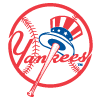 Anthony Rizzo, Yankees: Rizzo has turned back the clock this season, as the 32-year-old enters play Monday as the top first baseman in the American League according to our earned auction values. He's gotten to that point via the same method fellow veteran first baseman Joey Votto employed last season, cashing in some of his surplus contact ability to add a lot more power. Rizzo's 17.7 percent strikeout rate, while still strong, is four points above his 13.7 percent mark across the previous four seasons, but he's doing much more damage when he makes contact. His 11.9 percent barrel rate crushes his previous Statcast-era high of 8.8 percent, a mark he recorded back in 2016. The new approach seems tailor-made for the short right-field porch at Yankee stadium, where he's hit 13 of his 22 homers. This new version of Rizzo is very valuable in spite of his .226 average, though that number should rise along with his .206 BABIP.
Anthony Rizzo, Yankees: Rizzo has turned back the clock this season, as the 32-year-old enters play Monday as the top first baseman in the American League according to our earned auction values. He's gotten to that point via the same method fellow veteran first baseman Joey Votto employed last season, cashing in some of his surplus contact ability to add a lot more power. Rizzo's 17.7 percent strikeout rate, while still strong, is four points above his 13.7 percent mark across the previous four seasons, but he's doing much more damage when he makes contact. His 11.9 percent barrel rate crushes his previous Statcast-era high of 8.8 percent, a mark he recorded back in 2016. The new approach seems tailor-made for the short right-field porch at Yankee stadium, where he's hit 13 of his 22 homers. This new version of Rizzo is very valuable in spite of his .226 average, though that number should rise along with his .206 BABIP.
Second Base: 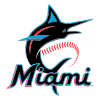 Jon Berti: Even if you liked Berti enough to draft him with one of your final few picks, it would have been entirely reasonable to drop him when he landed on the COVID-19 injured list in early May. At that point, he'd started just 11 of Miami's first 26 games, so he didn't look like a player worth holding onto if you needed a roster spot. If you made that perfectly defensible transaction, you missed out on the 25 steals he's managed in 37 games since his return to action May 27. No one else has more than 11 steals over that stretch, and no one else has more than 21 for the entire year. The Marlins are healthier than they were for the early part of that run, with both Joey Wendle and Brian Anderson back from injury, but Drury has hit well enough to continue featuring regularly. In 54 games this year, he's hit .277/.365/.386, good for a career-best 120 wRC+. His 5.0 percent barrel rate is unimpressive, but his 20.9 percent strikeout rate and 11.4 percent walk rate both beat league average, the latter by a fair amount.
Jon Berti: Even if you liked Berti enough to draft him with one of your final few picks, it would have been entirely reasonable to drop him when he landed on the COVID-19 injured list in early May. At that point, he'd started just 11 of Miami's first 26 games, so he didn't look like a player worth holding onto if you needed a roster spot. If you made that perfectly defensible transaction, you missed out on the 25 steals he's managed in 37 games since his return to action May 27. No one else has more than 11 steals over that stretch, and no one else has more than 21 for the entire year. The Marlins are healthier than they were for the early part of that run, with both Joey Wendle and Brian Anderson back from injury, but Drury has hit well enough to continue featuring regularly. In 54 games this year, he's hit .277/.365/.386, good for a career-best 120 wRC+. His 5.0 percent barrel rate is unimpressive, but his 20.9 percent strikeout rate and 11.4 percent walk rate both beat league average, the latter by a fair amount.
Third Base: 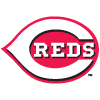 Brandon Drury, Reds: It's not hard to make the case that Drury is the story of the season thus far. Thanks to poor performance and health problems, including a spell of severe migraines in 2018, Drury received 100 plate appearances in just one of the last four seasons, and that season (2019) saw him post a .642 OPS for the Blue Jays. The Reds' teardown opened up a regular role for the 29-year-old utility man, however, and he could hardly have done more with the opportunity. In 78 games, he's hit .277/.333/.540 (good for a 136 wRC+) with a career-high 18 homers. While the performance is mostly out of nowhere, it's backed up by his underlying numbers, as he's combined a strong 12.3 percent barrel rate with a league-average 22.2 percent strikeout rate, metrics that make him look like Matt Olson (11.6 percent barrel rate, 22.6 percent strikeout rate) or Nelson Cruz (11.7 percent barrel rate, 22.3 percent strikeout rate). Few players deserve the league-winner title more than Drury, who was drafted in 0.002 percent of NFBC leagues.
Brandon Drury, Reds: It's not hard to make the case that Drury is the story of the season thus far. Thanks to poor performance and health problems, including a spell of severe migraines in 2018, Drury received 100 plate appearances in just one of the last four seasons, and that season (2019) saw him post a .642 OPS for the Blue Jays. The Reds' teardown opened up a regular role for the 29-year-old utility man, however, and he could hardly have done more with the opportunity. In 78 games, he's hit .277/.333/.540 (good for a 136 wRC+) with a career-high 18 homers. While the performance is mostly out of nowhere, it's backed up by his underlying numbers, as he's combined a strong 12.3 percent barrel rate with a league-average 22.2 percent strikeout rate, metrics that make him look like Matt Olson (11.6 percent barrel rate, 22.6 percent strikeout rate) or Nelson Cruz (11.7 percent barrel rate, 22.3 percent strikeout rate). Few players deserve the league-winner title more than Drury, who was drafted in 0.002 percent of NFBC leagues.
Shortstop: 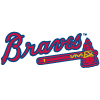 Dansby Swanson, Atlanta: Swanson finished April with a .644 OPS. That number has since jumped by over 200 points, vaulting Swanson up to second place in earned value among shortstops, trailing only consensus number one overall pick Trea Turner. If the season started May 1, Swanson would rank fourth in batting average (.327) and would be tied for fifth in runs (46), tied for eighth in steals (12), tied for 13th in RBI (43) and tied for 22nd in homers (13). That speed is the newest element of Swanson's game, as he's never swiped more than 10 bags in a season before. He's also making more contact than he has in recent seasons, as his 23.8 percent strikeout rate since the start of May would be his best mark since 2019. To top it all off, his 11.8 percent barrel rate on the year is a career high, though it's not far from the 11.4 percent mark he produced in both 2020 and 2021. A .388 BABIP implies Swanson won't keep all this up in the second half, but he'll still be a much-improved fantasy asset if he keeps running while showing the same power he's shown the last two seasons.
Dansby Swanson, Atlanta: Swanson finished April with a .644 OPS. That number has since jumped by over 200 points, vaulting Swanson up to second place in earned value among shortstops, trailing only consensus number one overall pick Trea Turner. If the season started May 1, Swanson would rank fourth in batting average (.327) and would be tied for fifth in runs (46), tied for eighth in steals (12), tied for 13th in RBI (43) and tied for 22nd in homers (13). That speed is the newest element of Swanson's game, as he's never swiped more than 10 bags in a season before. He's also making more contact than he has in recent seasons, as his 23.8 percent strikeout rate since the start of May would be his best mark since 2019. To top it all off, his 11.8 percent barrel rate on the year is a career high, though it's not far from the 11.4 percent mark he produced in both 2020 and 2021. A .388 BABIP implies Swanson won't keep all this up in the second half, but he'll still be a much-improved fantasy asset if he keeps running while showing the same power he's shown the last two seasons.
Outfield: 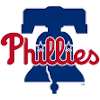 Kyle Schwarber, Phillies: Say hello to the best outfielder in the National League, at least according to our earned auction values. Schwarber looked like a disappointing signing at the start of his Phillies tenure, hitting .185/.311/.410 through the end of May. Since the calendar flipped to June, however, he's been on a remarkable tear, slashing .268/.369/.681 with 17 homers. That improvement came as he cut his strikeout rate from 31.6 percent to 25.6 percent while upping his barrel rate from an excellent 17.4 percent to an absurd 26.8 percent. His 28 homers now lead all other National Leaguers by at least five and trail only Aaron Judge for the overall crown. There's always the possibility for something like this when a player with Schwarber's strong power track record moves to a park and lineup like he has in Philadelphia, but it couldn't have gone more right for him and the Phillies than it has over the last six weeks.
Kyle Schwarber, Phillies: Say hello to the best outfielder in the National League, at least according to our earned auction values. Schwarber looked like a disappointing signing at the start of his Phillies tenure, hitting .185/.311/.410 through the end of May. Since the calendar flipped to June, however, he's been on a remarkable tear, slashing .268/.369/.681 with 17 homers. That improvement came as he cut his strikeout rate from 31.6 percent to 25.6 percent while upping his barrel rate from an excellent 17.4 percent to an absurd 26.8 percent. His 28 homers now lead all other National Leaguers by at least five and trail only Aaron Judge for the overall crown. There's always the possibility for something like this when a player with Schwarber's strong power track record moves to a park and lineup like he has in Philadelphia, but it couldn't have gone more right for him and the Phillies than it has over the last six weeks.
Outfield: 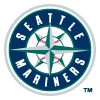 Julio Rodriguez, Mariners: Not including the final two weeks before Opening Day, when it became clear that Rodriguez had a very real chance of breaking camp in the majors, Rodriguez had an NFBC ADP of 274, sandwiched between Anthony Santander and Raimel Tapia. If you grabbed him then, you have to be absolutely loving how things have panned out. Even if you were late to the party, grabbing him at his 148 ADP over the last two weeks, you've still made a massive profit. The "Will Julio Rodriguez be a first-rounder in 2023" discourse has picked up in recent weeks, and for good reason. Per our earned auction values page, he's been the 10th-best player already as a rookie. His excellent bat isn't much of a surprise, though it was far from guaranteed that it would show up right away, but what's elevated him to fantasy royalty is his speed. Preseason expectations were that he'd steal a respectable 15 bases or so, but he's already swiped 21 bags, trailing only the aforementioned Berti.
Julio Rodriguez, Mariners: Not including the final two weeks before Opening Day, when it became clear that Rodriguez had a very real chance of breaking camp in the majors, Rodriguez had an NFBC ADP of 274, sandwiched between Anthony Santander and Raimel Tapia. If you grabbed him then, you have to be absolutely loving how things have panned out. Even if you were late to the party, grabbing him at his 148 ADP over the last two weeks, you've still made a massive profit. The "Will Julio Rodriguez be a first-rounder in 2023" discourse has picked up in recent weeks, and for good reason. Per our earned auction values page, he's been the 10th-best player already as a rookie. His excellent bat isn't much of a surprise, though it was far from guaranteed that it would show up right away, but what's elevated him to fantasy royalty is his speed. Preseason expectations were that he'd steal a respectable 15 bases or so, but he's already swiped 21 bags, trailing only the aforementioned Berti.
Outfield: 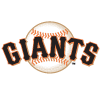 Joc Pederson, Giants: Not starting against lefties suppresses Pederson's counting stats to the point that he hasn't quite ascended to the top of the earned value leaderboards, but he still sits eighth among National League outfielders, representing a massive profit off his 490 NFBC ADP. After two straight seasons as a below-average hitter, Pederson has become the latest success story of the Giants' veteran rehabilitation program. His .259/.356/.536 slash line is good for a 141 wRC+, which easily beats his previous career high of 128, but he's actually gotten unlucky if anything according to his expected numbers. Both his .297 xBA and his .624 xSLG suggest he's been one of the best hitters in the league. His 17.9 percent barrel rate comes in far above his career average of 10.6 percent, and he's paired that with a solid 22.0 percent strikeout rate. It all looks very real for the veteran outfielder, so expect plenty more bombs in the second half.
Joc Pederson, Giants: Not starting against lefties suppresses Pederson's counting stats to the point that he hasn't quite ascended to the top of the earned value leaderboards, but he still sits eighth among National League outfielders, representing a massive profit off his 490 NFBC ADP. After two straight seasons as a below-average hitter, Pederson has become the latest success story of the Giants' veteran rehabilitation program. His .259/.356/.536 slash line is good for a 141 wRC+, which easily beats his previous career high of 128, but he's actually gotten unlucky if anything according to his expected numbers. Both his .297 xBA and his .624 xSLG suggest he's been one of the best hitters in the league. His 17.9 percent barrel rate comes in far above his career average of 10.6 percent, and he's paired that with a solid 22.0 percent strikeout rate. It all looks very real for the veteran outfielder, so expect plenty more bombs in the second half.
Utility: 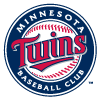 Luis Arraez, Twins: We all knew what Arraez was, didn't we? A true one-category player, whose positional versatility made him a fine late pick but whose complete lack of power made him hardly a priority. As it turns out, when you're this elite in your one category at the same time that the rest of the league is moving quickly in the other direction, you provide a ton of fantasy value. A full picture of just how incredible Arraez is in the batting average category requires a look at the "+ Stats" leaderboard over at FanGraphs, where stats such as batting average are adjusted for park and league context in the same manner you may be used to with wRC+ or ERA+. Arraez's career 131 mark means he's been 31 percent better than league average. Among players this century, Jose Altuve ranks second, but he's all the way down at 121. The most recent player who can beat Arraez's mark is Ty Cobb, who retired in 1928. They just don't make them like this any more.
Luis Arraez, Twins: We all knew what Arraez was, didn't we? A true one-category player, whose positional versatility made him a fine late pick but whose complete lack of power made him hardly a priority. As it turns out, when you're this elite in your one category at the same time that the rest of the league is moving quickly in the other direction, you provide a ton of fantasy value. A full picture of just how incredible Arraez is in the batting average category requires a look at the "+ Stats" leaderboard over at FanGraphs, where stats such as batting average are adjusted for park and league context in the same manner you may be used to with wRC+ or ERA+. Arraez's career 131 mark means he's been 31 percent better than league average. Among players this century, Jose Altuve ranks second, but he's all the way down at 121. The most recent player who can beat Arraez's mark is Ty Cobb, who retired in 1928. They just don't make them like this any more.
Starting Pitcher: 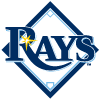 Shane McClanahan, Rays: The top of the earned value leaderboard for starting pitchers is full of players who weren't drafted as anything close to fantasy aces, but it's the player at the very top whose rise seems the most sustainable. McClanahan certainly wasn't ignored during draft season, but his 109.3 ADP was merely good for 30th among starting pitchers, suggesting he was viewed as a low-end number two or high-end number-three in 15-team leagues. He's only gone on to become possibly the best pitcher in baseball. According to xFIP, there's no competition, as his 1.98 mark is far better than second-place Kevin Gausman's 2.80. McClanahan's 36.0 percent strikeout rate is outstanding on its own, but it looks even better next to his 50.7 percent groundball rate. In the last 20 years, only one pitcher has managed a strikeout rate north of 30 percent and a groundball rate of at least 50 percent in a full season: Clayton Kershaw, who did it in 2014 and 2015. Pretty company for the young Rays lefty.
Shane McClanahan, Rays: The top of the earned value leaderboard for starting pitchers is full of players who weren't drafted as anything close to fantasy aces, but it's the player at the very top whose rise seems the most sustainable. McClanahan certainly wasn't ignored during draft season, but his 109.3 ADP was merely good for 30th among starting pitchers, suggesting he was viewed as a low-end number two or high-end number-three in 15-team leagues. He's only gone on to become possibly the best pitcher in baseball. According to xFIP, there's no competition, as his 1.98 mark is far better than second-place Kevin Gausman's 2.80. McClanahan's 36.0 percent strikeout rate is outstanding on its own, but it looks even better next to his 50.7 percent groundball rate. In the last 20 years, only one pitcher has managed a strikeout rate north of 30 percent and a groundball rate of at least 50 percent in a full season: Clayton Kershaw, who did it in 2014 and 2015. Pretty company for the young Rays lefty.
Starting Pitcher:  Sandy Alcantara, Marlins: I'll somewhat begrudgingly give the other starting pitcher spot to Alcantara, a player I need to finally get around to accurately rating. I just couldn't get behind using a third-round pick on a pitcher whose forgettable 24.0 percent strikeout rate last year was a career high, especially when his ERA estimators every season screamed that regression was coming. As it turns out, the market was actually too low on him, not too high. While his strikeout rate has dipped to an even more pedestrian 22.4 percent, his 1.73 ERA ties McClanahan for second among qualified starters, thanks to a career-high 56.6 percent groundball rate as well as a 6.3 percent walk rate. His main fantasy appeal comes from his workload, however. After going at least seven innings in 12 straight starts, his 130.1 innings through Sunday's contest lead the league by a full 19 frames, helping him sit eighth in raw strikeouts (the stat that actually matters in most leagues) despite unexciting numbers on a per-batter basis. He's a throwback outlier in much the same way Arraez is on the offensive side, proving that excelling in one area is valuable even if the league as a whole cares less about that skill than ever.
Sandy Alcantara, Marlins: I'll somewhat begrudgingly give the other starting pitcher spot to Alcantara, a player I need to finally get around to accurately rating. I just couldn't get behind using a third-round pick on a pitcher whose forgettable 24.0 percent strikeout rate last year was a career high, especially when his ERA estimators every season screamed that regression was coming. As it turns out, the market was actually too low on him, not too high. While his strikeout rate has dipped to an even more pedestrian 22.4 percent, his 1.73 ERA ties McClanahan for second among qualified starters, thanks to a career-high 56.6 percent groundball rate as well as a 6.3 percent walk rate. His main fantasy appeal comes from his workload, however. After going at least seven innings in 12 straight starts, his 130.1 innings through Sunday's contest lead the league by a full 19 frames, helping him sit eighth in raw strikeouts (the stat that actually matters in most leagues) despite unexciting numbers on a per-batter basis. He's a throwback outlier in much the same way Arraez is on the offensive side, proving that excelling in one area is valuable even if the league as a whole cares less about that skill than ever.
Relief Pitcher:  Clay Holmes, Yankees: Holmes didn't claim the Yankees' closer job until Aroldis Chapman hit the injured list in late May, but he's atop the reliever earned value leaderboard nonetheless. That's the sort of thing that happens when you allow just two earned runs across an entire half-season. It also helps that Holmes is closing games for a team that has five more victories than any other, allowing Holmes to tie for 11th with 16 saves despite holding the job for just part of the season. He isn't necessarily who I'd rank as the top closer from here on out, as there's always a chance that Chapman's extensive track record earns him another look in the ninth inning if he starts looking like himself again, though the veteran lefty's three earned runs and 3:5 K:BB in three innings since his return to action hardly suggest that such a move is imminent. It's going to take quite a bit to unseat Holmes, whose 27.0 percent strikeout rate and 4.1 percent walk rate make for a fine combination on their own even before considering his absurd 82.7 percent walk rate, a number even Zack Britton never reached.
Clay Holmes, Yankees: Holmes didn't claim the Yankees' closer job until Aroldis Chapman hit the injured list in late May, but he's atop the reliever earned value leaderboard nonetheless. That's the sort of thing that happens when you allow just two earned runs across an entire half-season. It also helps that Holmes is closing games for a team that has five more victories than any other, allowing Holmes to tie for 11th with 16 saves despite holding the job for just part of the season. He isn't necessarily who I'd rank as the top closer from here on out, as there's always a chance that Chapman's extensive track record earns him another look in the ninth inning if he starts looking like himself again, though the veteran lefty's three earned runs and 3:5 K:BB in three innings since his return to action hardly suggest that such a move is imminent. It's going to take quite a bit to unseat Holmes, whose 27.0 percent strikeout rate and 4.1 percent walk rate make for a fine combination on their own even before considering his absurd 82.7 percent walk rate, a number even Zack Britton never reached.











